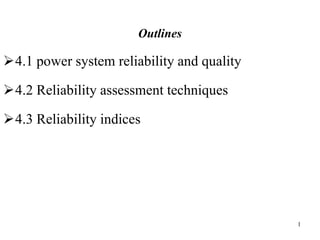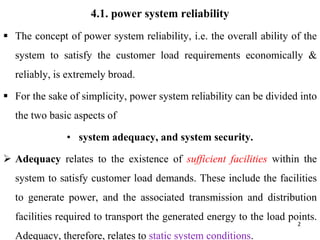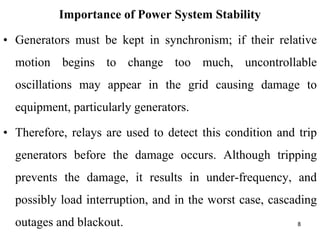The document discusses various aspects of power system reliability including adequacy, security, and stability. It defines adequacy as relating to having sufficient generation and transmission facilities to meet customer demand. Security pertains to how the system responds to disturbances like loss of generation or transmission. Stability refers to generators staying synchronized during disturbances. The document also discusses reliability assessment techniques like loss of load probability and expectation indices used to evaluate generation adequacy. Distribution reliability is assessed using indices that consider customer interruptions and outage times.






































![39
n
i
i 1
=
Interruptionfrequencyf [interruptions/year]
s
n
i i
i=1
n
i
i=1
r
=
Interruptiondurationr [hours/interruption]
s
n
i i
i=1
r
=
U
navailabilityqs 8760
Distribution System Reliability Assessment](https://image.slidesharecdn.com/chapter-4-230328100746-8cd6cd38/85/CHAPTER-4-ppt-39-320.jpg)




